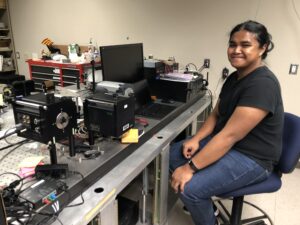
Dason was born on the island of Hawai?i and grew up in Kea?au. He is pursuing a bachelor’s degree in computer science—with a minor in mathematics—at the University of Hawai?i at Hilo and he will begin his junior year this fall. His career plans upon graduation include working as a software engineer or teaching in secondary education. In his free time, he enjoys exploring minimalism, roaming around places, and working with computers.
Home Island: Big Island
High School: Keaau High School, HI
Institution when accepted: University of Hawaii at Hilo
Akamai Project: Developing Software Interfaces for the Robo-AO-2 Adaptive Optics System
Project Site: Institute for Astronomy (IfA) – Hilo, Hawai‘i Island HI
Mentors: Paul Barnes
Project Abstract:
Robo-AO-2 is an in development laser adaptive optics system for the University of Hawai?i 88-inch telescope. In order to remotely operate Robo-AO-2’s flip mirrors, shutter systems, etc., software must be created that will interface with its hardware components. The programs will compile in a Linux environment, in which they can be compiled remotely over a secure shell protocol (ssh). The two main devices that will be controlled are a remote input/output (IO) device and a motion controller. Both devices were programmed in C++, and both contain a text-based interface that controls Robo-AO-2’s hardware components. Since these devices are controlled remotely by Ethernet, configuring their IP addresses and port numbers was necessary to have the new software communicate with those devices. The first device programmed, the remote IO device, had its own communication library, so functions that were critical for interfacing were available to be used. The second device programmed, the motion controller, did not have any proprietary communication library similar to the prior; instead, the Boost C++ libraries were utilized. In particular, the Asio library was used to handle socket programming, which was essential for our new software to communicate with the motion controller over its designated IP address. These new programs now successfully provide remote control of their respective mechanical components in Robo-AO-2, and will become a permanent addition to the suite of software for the adaptive optics system.